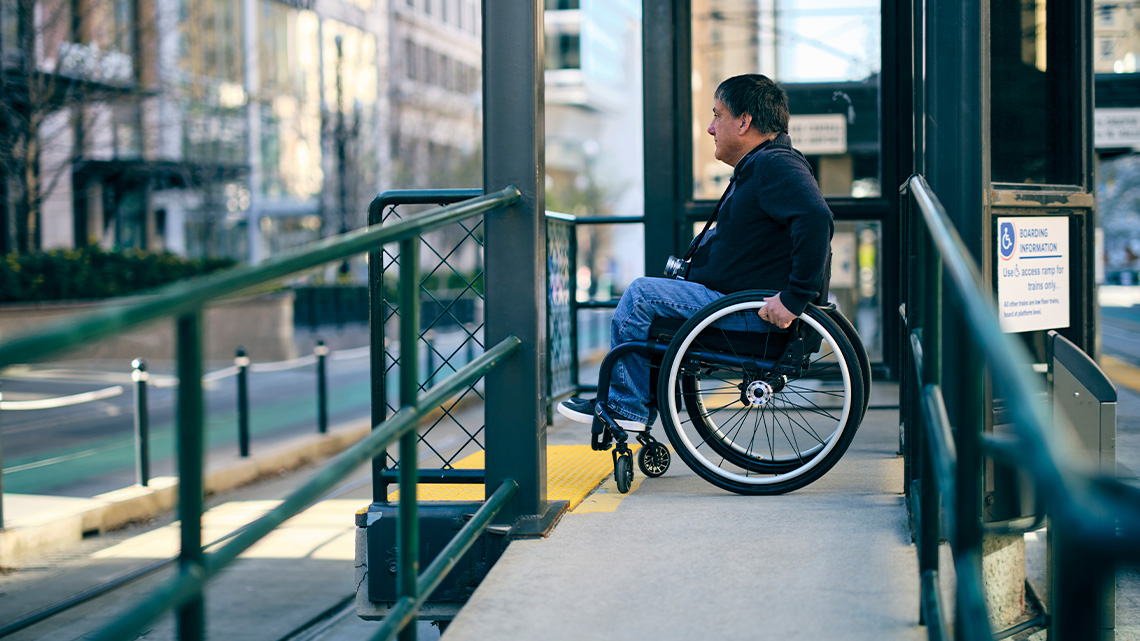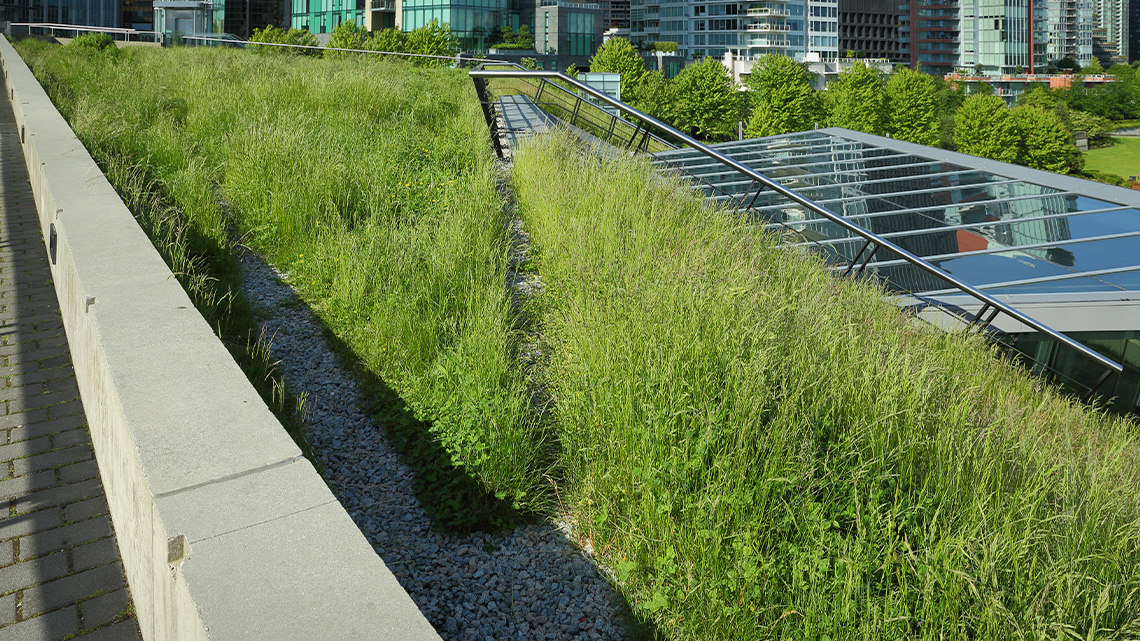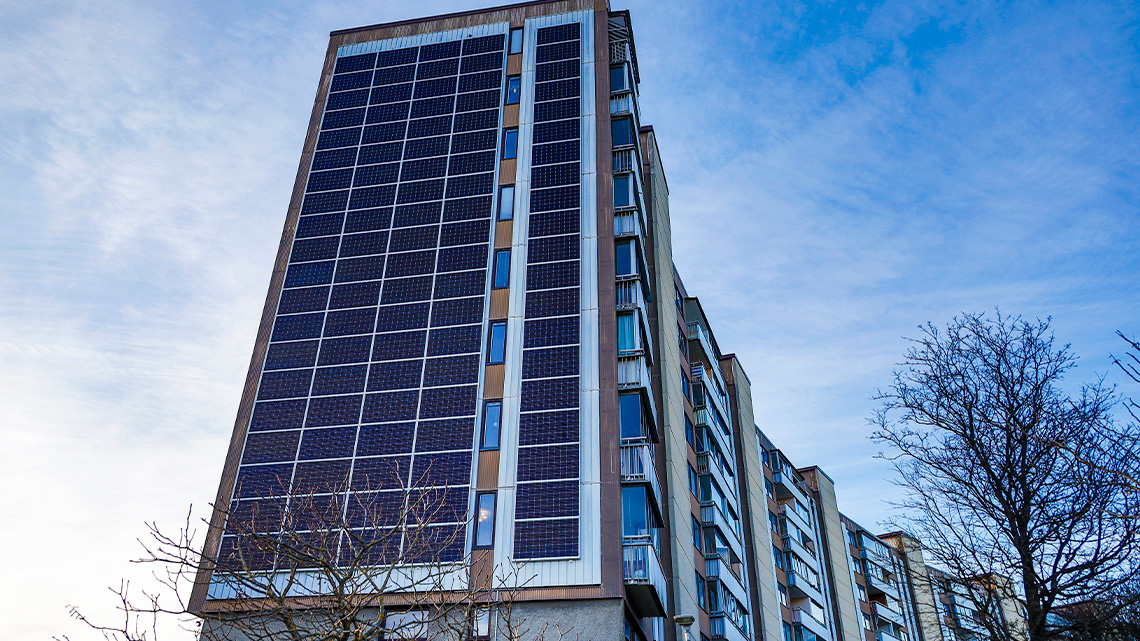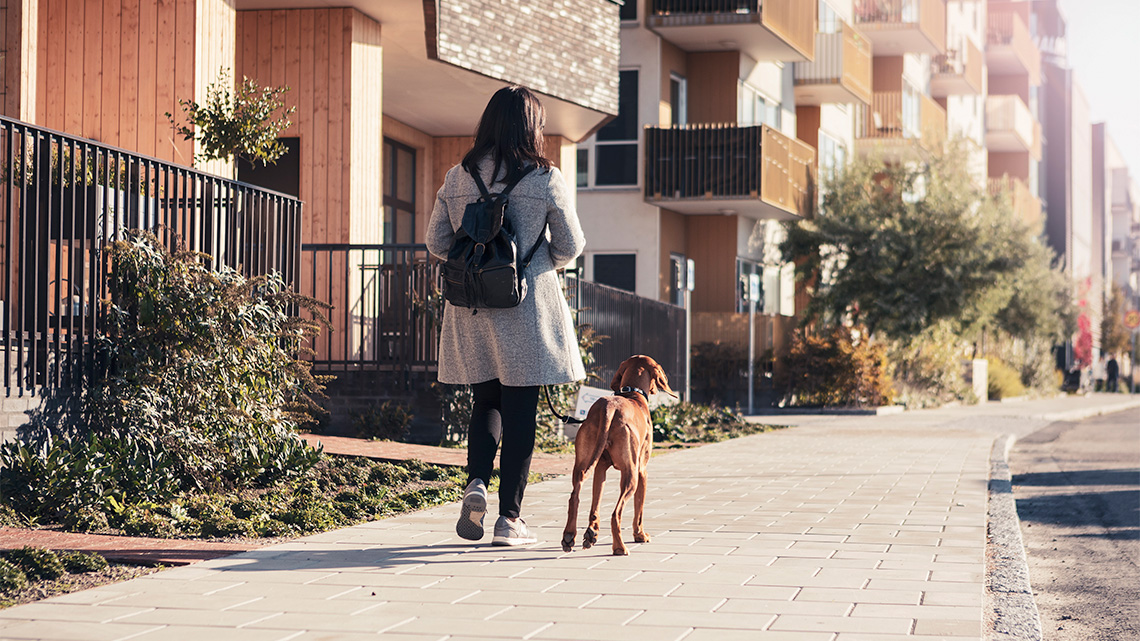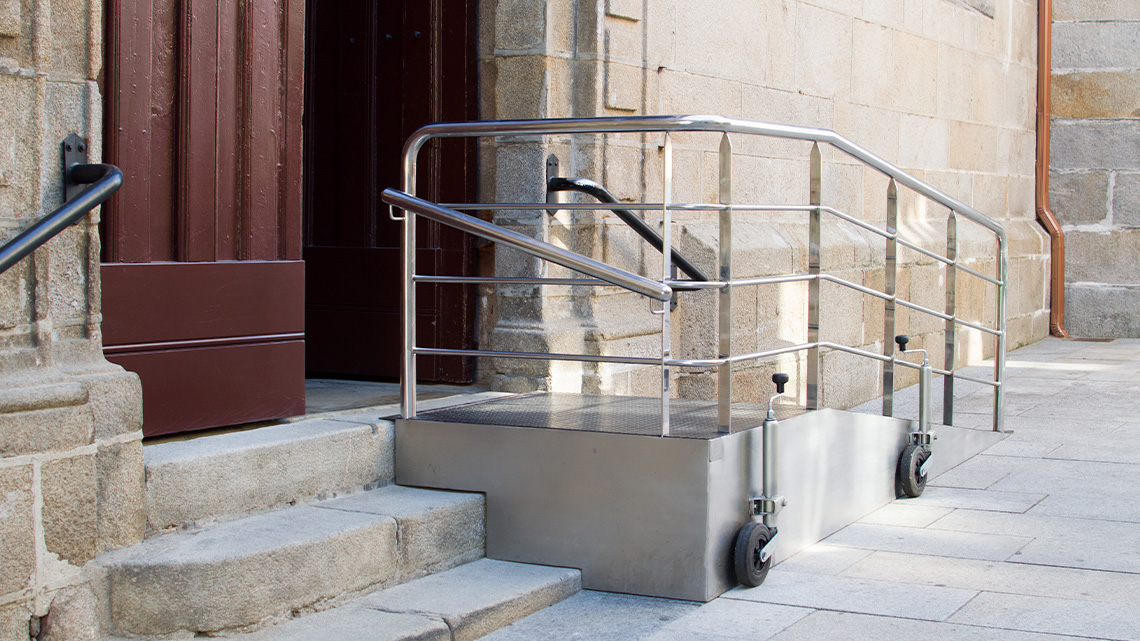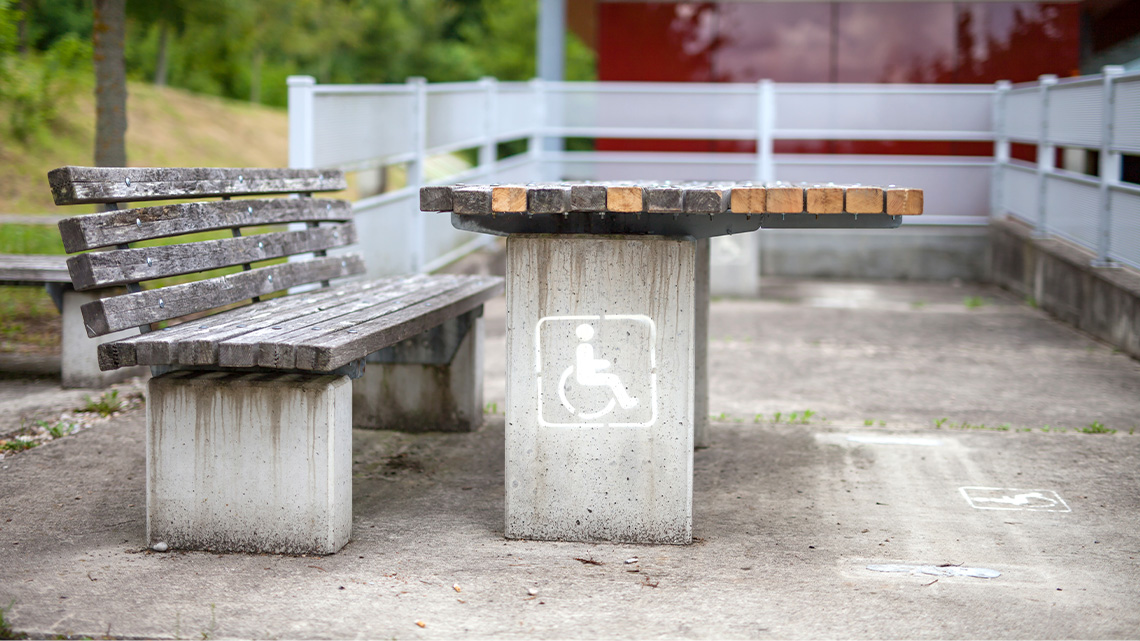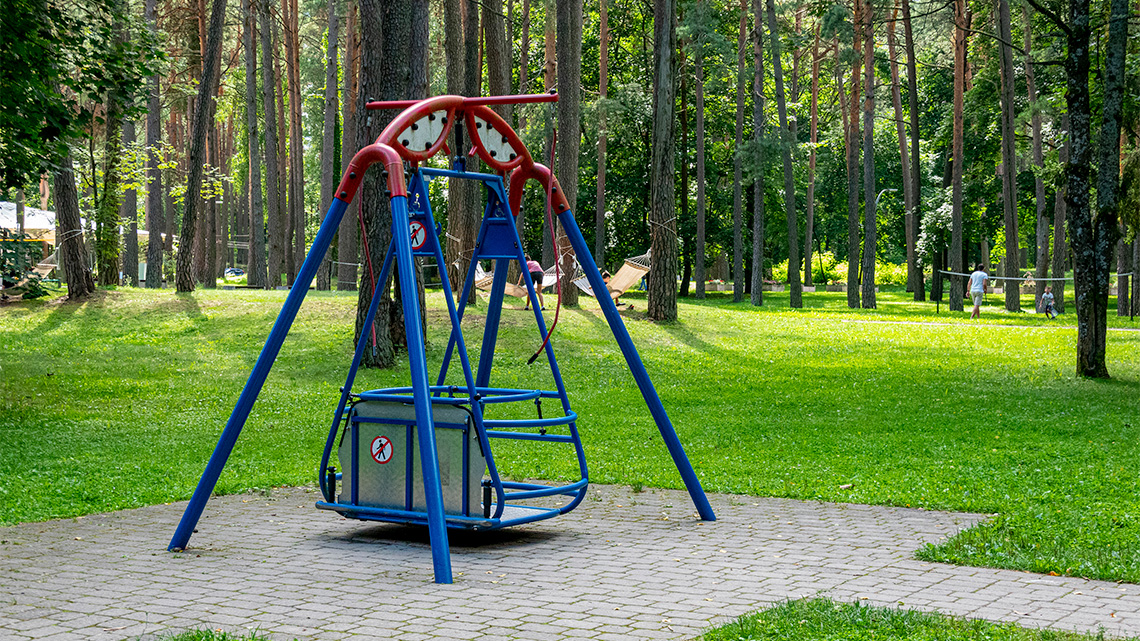Minds On
Accessibility and sustainability

Accessibility refers to the practice of making information, activities, and/or environments usable for as many people as possible.
Sustainability refers to changes that help look after the planet, including helping to protect animals, plants and our natural resources so that future generations will be able to enjoy them.
Explore the following images and record any examples you notice of accessibility or sustainability in the organizer provided, or another method of your choice.
Complete the Accessibility and Sustainability Chart in your notebook or using the following fillable and printable document. If you would like, you can use speech-to-text or audio recording tools to record your thoughts.
| Accessibility examples | Sustainability examples |
|---|---|
Press the ‘Activity’ button to access Accessibility and Sustainability Chart.
Think about it!
How do you think people would be impacted if there was a lack of accessibility and sustainability in a city?
Action
Accessible spaces
An accessible space is a public space that includes specific features that make it easier for everyone to use that space. Think about a city or community. Can you brainstorm any features that make an outdoor space accessible and useable by everyone? Record your ideas in a method of your choice.
Now, explore the following carousel of images as a few examples of features in a city that make the space accessible to everyone.
When there is a lack of accessible spaces in a community, it negatively impacts the population and limits equal access to all services. This could include a lack of accessibility in the physical environment, a lack of assistive technology, negative attitudes towards accessibility, and services, systems, and policies that hinder the involvement of all people. This could also include buildings and services that are not accessible to everyone. It is important to create an environment where everyone can easily access the same services and supports.
This is where a city planner, sometimes referred to as an urban planner, comes in. A city planner thinks about the design of a city or town so that it best supports the communities that live there, including create a city with accessible spaces. Accessibility benefits everyone. City planners design public spaces from the beginning with accessibility in mind, to provide everyone with the opportunity to work, shop, access healthcare and other services, travel, and play independently.
In a method of your choice, brainstorm what you think a city planner should consider when designing a city that is accessible to everyone?
Press ‘Accessibility List’ to access what a city planner should consider when designing an accessible city.
Explore some of the following images of outdoor spaces that were designed with accessibility in mind.
Pause and Reflect
Pause and reflect
- What does ‘accessible space’ mean?
- If you were making a checklist of everything an accessible space (indoors or outdoors) should have, what would you include?
- What should a city planner consider when designing new areas in the city?
- Making connections to your own neighbourhood or city, can you think of any accessible features you’ve noticed before?
Sustainable design
Along with accessibility, city planners must also consider sustainability. Sustainability is the idea that we need to live in our environment without using too much of the earth’s natural resources. We want to be able to use what we need and make sure that natural resources do not run out for future generations.
In a sustainable design, a city planner should consider the following features:
- transportation methods
- infrastructure
- energy production and consumption
- green spaces
- water conservation and waste management
Pause and Reflect
Pause and reflect
Can you make any connections between sustainability and accessibility? How do you think a city planner could make sustainable spaces accessible for everyone?
City planner spotlight: Janette Sadik-Khan
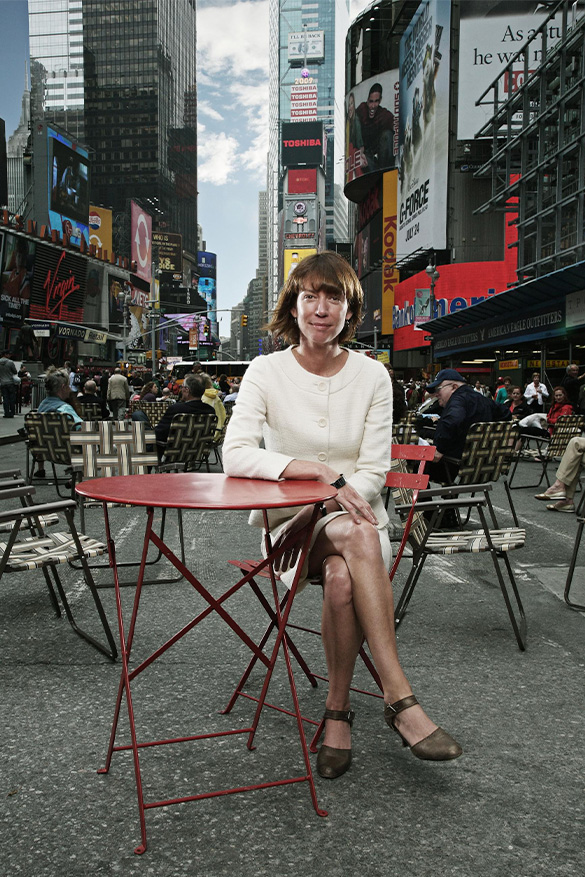
Janette Sadik-Khan is a city planner that works in New York City improving city streets to be more sustainable and accessible for all. She began by asking herself, “What do we want the streets of the future to look like?” She is best known for closing Times Square to traffic and creating nearly 650 kilometers of bike lanes, seven rapid bus lines, and launching the largest bike sharing program in North America. Rather than creating more lanes and spaces for cars, contributing to climate change, Janette focused on making the city streets more sustainable and accessible by “returning it to the people”. This set a great example for the rest of the world to follow! Local businesses found that having more pedestrian traffic (people walking, biking, etc.) in the area versus cars was helpful for their businesses too.
Check out this before and after image of Times Square in New York City.

A city planner must follow certain steps to create a new neighbourhood or make changes to an existing one to make it more accessible and sustainable.
Using the following interactive, drag each step in the order that you think a city planner might need to follow.
The following cards contain items that fit together in a specific order (sequence). Put the items in each answer box in the correct order.
When a city planner begins their process of designing a neighbourhood or making changes to an existing one, they must first focus on the issues that they want to address. They may ask questions about the current accessibility of the neighbourhood and what should be considered when planning for new spaces and buildings. When considering sustainability, they should think about transportation, use of sustainable materials in infrastructure, incorporating green spaces, energy production and consumption, use of water, and waste management. Once they have an understanding of the issues they want to focus on, they can begin to brainstorm possible designs and ideas for what they’d like to incorporate. It is important that they conduct research about their ideas and speak to possible stakeholders.
Who do you think they may need to speak to before designing a neighbourhood or changing a space? Brainstorm your ideas in a method of your choice.
Press ‘Answer’ to access who a city planner would need to speak to.
They would likely need to speak with: environmental groups, various community members, government or mayor of the town, local business owners, engineers, and many more.
Once they’ve brainstormed ideas and conducted research, including speaking with possible stakeholders, they can begin to create their design using a city map. Once they have a design, they may consider seeking feedback from the same or different stakeholders and making changes to their design.
Consolidation
City planning
This learning activity connects new and existing approaches for young scientists to create positive changes in their communities.

Consider everything that you have learned in this learning activity and respond to the following questions in a method of your choice. Be sure to use evidence from your learning to support your response.
- Why is it important for a city planner to consider accessibility and sustainability in their design for a city?
- How will this impact future communities?
Create
Imagine you are a city planner who has just been asked to design a neighbourhood. Begin by following the steps of a city planner to brainstorm about your design:
Step 1: Assess the current issue – How will you consider sustainability and accessibility?
Step 2: Brainstorm ideas to address the issue – What solutions could you include to ensure your neighbourhood is accessible and sustainable?
Step 3: Research possible solutions and opinions – what questions will you ask possible stakeholders? Who will you ask?
You can use the organizer provided, or another method of your choice.
Complete the Planner Chart in your notebook or using the following fillable and printable document. If you would like, you can use speech-to-text or audio recording tools to record your thoughts.
|
Assess the issue |
|
|
Brainstorm ideas to address Sustainability and accessibility |
|
|
Research possible solutions and opinions. Who will you consult? |
Press the ‘Activity’ button to access Planner Chart.
Now, you must design a neighbourhood, in a method of your choice, that has at least one sustainable feature and one accessible feature. Explain why you chose these two features for your neighbourhood.
Reflection
As you read through these descriptions, which sentence best describes how you are feeling about your understanding of this learning activity? Press the button that is beside this sentence.
I feel…
Now, record your ideas using a voice recorder, speech-to-text, or writing tool.
